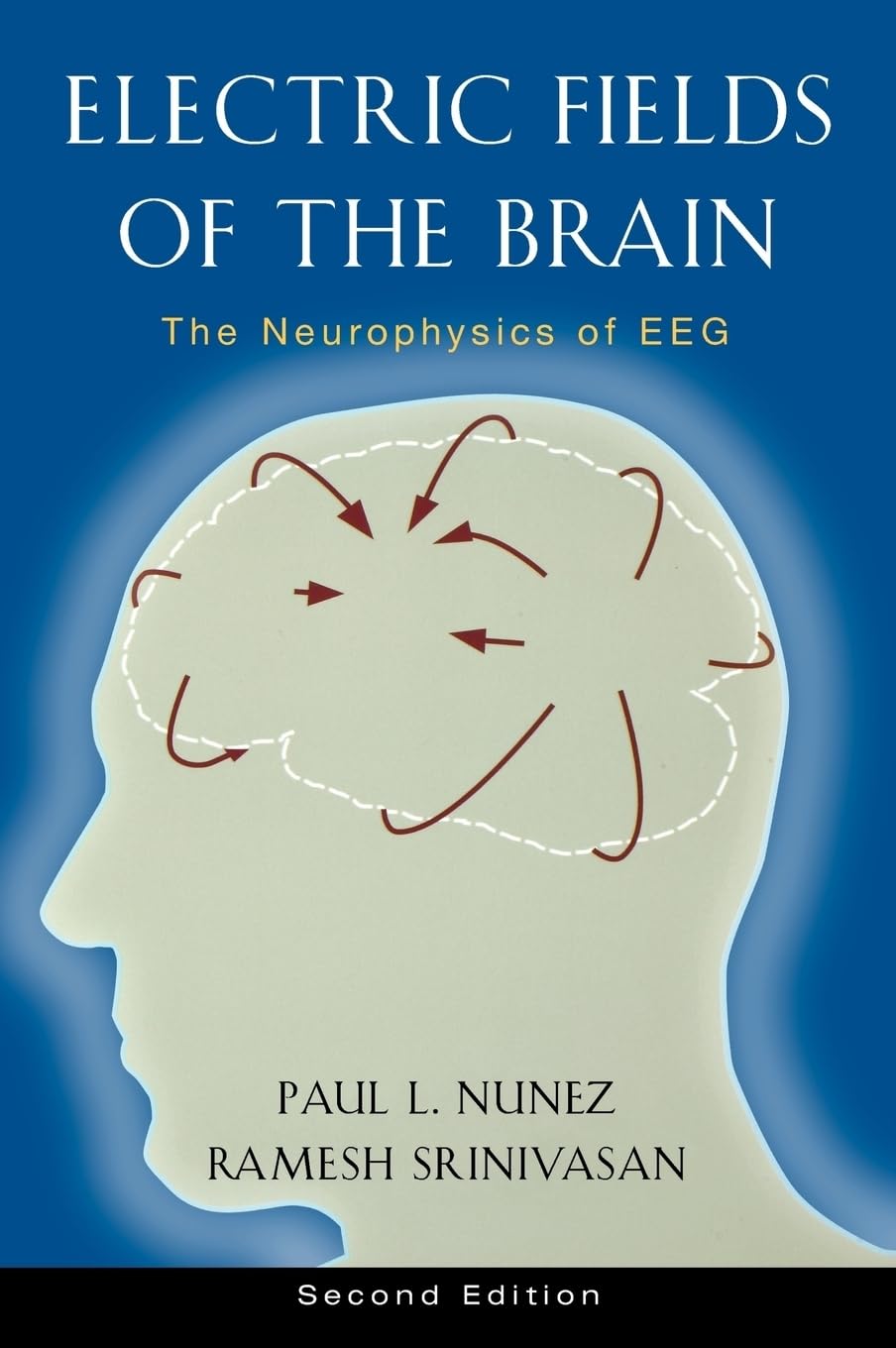

Electric Fields of the Brain: The Neurophysics of EEG, 2nd Edition
N**R
Great book
Wonderful textbook. It definitely bridges the gap between electroencephalographers and physicists. Great read for neurophysiologists and electroencephalographers interested in learning about the physics behind EEG. It’s highly technical though.
K**N
Essential for anyone doing EEG
Although technical enough to not be taken lightly, this book should be read by anyone who wants to really understand what they are measuring with their EEG electrodes. College level physics, electrical engineering and calculus will be required to get much out of the book, and even then the going is slow. However, subjects such as cortical dipoles, temporal filtering and why EEG has a 1/f power spectrum all make more sense to me now.I use EEG for neurofeedback and other quantitative medical applications. I recommend this book to anyone interested in EEG beyond the technician level. I give it four stars only because much of the mathematics is very technical and difficult.
D**F
fascinating, appropriate for beginners
fascinating, appropriate for beginners
D**N
Not a great book
Lots of key references are missing; no excuse, in this age of computers...Lots of explanations "in plain english" are missing; difficult to understand, in many places...
T**E
Review by EEG scientist
This is an authoritative text on the basic principles of the human electroencephalogram (EEG), containing a wealth of valuable information that would be difficult or impossible to obtain from other sources. It should be of interest to scientists with nearly any background, ranging from physics and engineering to neurobiology and psychology. A remarkable quality of this text is that it is written to serve all these audiences well. Hard-core mathematical readers can be assured that these authors know their physics, and apply it aptly to not only EEG measurement technology, but also to the spatiotemporal dynamics of the cortical sheet. Another prominent quality is its rigorous consideration of the multi-scale nature of cortical anatomy and its dynamics, and a quantitative assessment of what aspects of human brain dynamic processes may be accessible with scalp EEG. In the main text, equations are stated without proof, and always explained intuitively. In this way, the book is quite accessible to non-mathematical readers, who can simply read around the equations and still follow the arguments. Indeed, this text is packed with "take-home messages" that neuroscientists would do well to keep in mind. The appendices provide mathematical derivations that are pivotal to arguments in the main text. By serving all these audiences so well, this text is a valuable resource for those interested in bridging the various subfields of human neuroscience. Insofar as EEG and MEG measure closely related quantities, this text is also essential for MEG researchers.
J**T
No Book Like It
While the first edition (1981) of this book was widely acclaimed, this second edition is substantially improved. As a clinical neurologist, I appreciate the author's relaxed conversational style when addressing the often subtle connections between physics and neuroscience, reminiscent of Feynman's famous Lectures on Physics. This approach brings together the physicist and neuroscientist and enlightens both. The material covers a broad range from brain waves (EEG) to basic questions on the nature of consciousness. This is a must read for anyone seriously interested in how the brain works.
W**.
Four Stars
This newer edition is much more complete and interesting than the original 1980 edition.
Y**O
Advanced neurophysiology
Excellent book for everyone in the field of neurophysiology and computed neuroscience. Don't expect much of clinical practice, but at the same time you can get information that can be practical. It's a most for all that are in the field of electro-physics of the brain.
Trustpilot
2 weeks ago
1 month ago